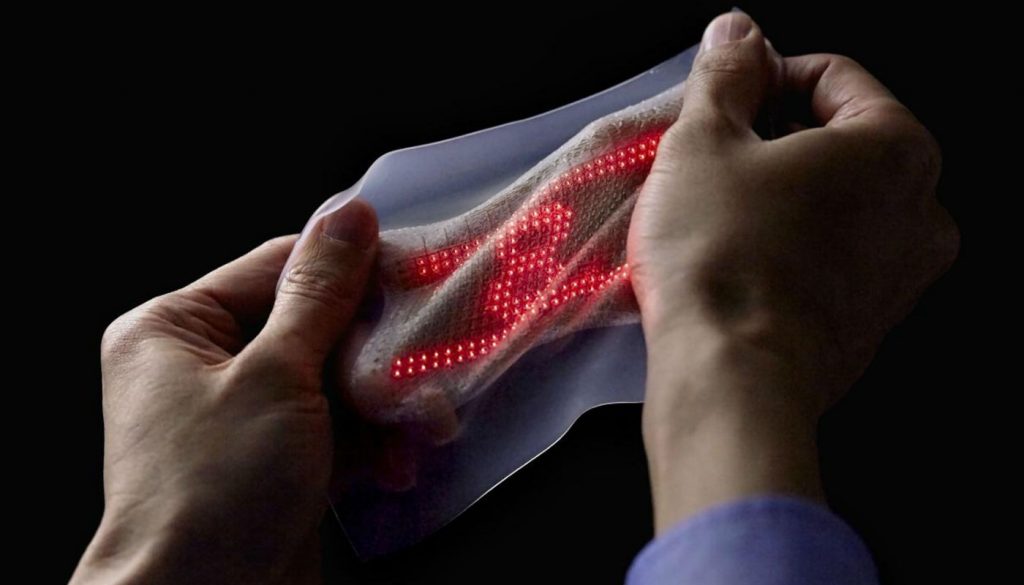The ongoing miniaturisation of semiconductors has enabled some big advances in wearable tech. The latest is a soft, stretchy, ultra thin sensor that can monitor patient vital signs without being invasive.
Engineers from the University of Tokyo’s department of electronic engineering, led by Organic Transistor Lab leader Professor Takao Someya, have developed an ‘electronic skin’ to help doctors and patients more easily monitor vital signs, including temperature, pressure and electrical signals emitted by muscles.
Now for the first time, the team has successfully demonstrated it can also measure and transmit electrocardiogram data.
The device is composed of a soft, flexible material that’s actually an ultra-thin LED display, consisting of a 16 x 24 array of micro LEDs and stretchable wiring mounted on a 1 millimetre thick rubber sheet. An on-skin, nanomesh electrode collects medical data, such as a heartbeat, and displays the information on the electronic skin as a moving graphic. Data collected by the sensor can also be transmitted wirelessly and stored on the cloud for easy access and viewing.
Because the device is designed for use by people who might need constant monitoring, such as the elderly or chronically ill, it’s breathable and lightweight to minimise discomfort. The sensor can withstand repeated stretching to as much as 45 per cent of its original size without risk of losing its mechanical or electrical properties.
“Because it’s made from thin and soft materials, it can be deformed freely,” Someya said.
The entire device – display and sensor – can be worn continuously for a week without causing any irritation or inflammation.
To mimic the elasticity of skin, the developers designed the material to minimise stress resulting from stretching where the soft material of the mount and elastic wiring meets the hard material of the micro LEDs. During testing, not a single pixel failed when subjected to the stretching and contracting motions of the body.
Another advantage of this design is it can be easily mass produced. Researchers relied on existing electronics manufacturing techniques, such as screen printing the silver wiring, and mounting the LEDs on the rubber sheet with a chip mounter and solder paste commonly used for making printed circuit boards.
“Applying these methods will likely accelerate the commercialisation of the display and help keep down future production costs,” the developers said.
The wearable is still undergoing testing, but the developers hope to bring the electronic skin display to market within the next three years by improving the structure, refining the production process, and overcoming technical challenges such as large-area coverage.
With further tweaks, Someya said this wearable tech could improve the quality of care for patients by making self-monitoring more intuitive, as well as help the medical industry better meet the needs of an ageing population.
“The current ageing society requires user-friendly wearable sensors for monitoring patient vitals in order to reduce the burden on patients and family members providing care,” Someya said.
